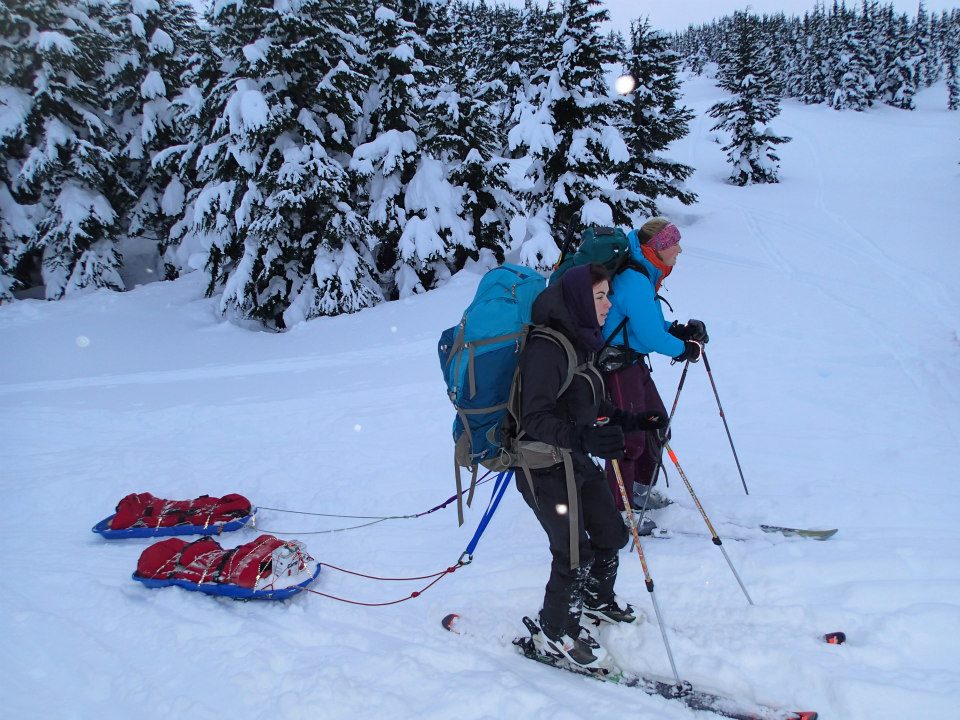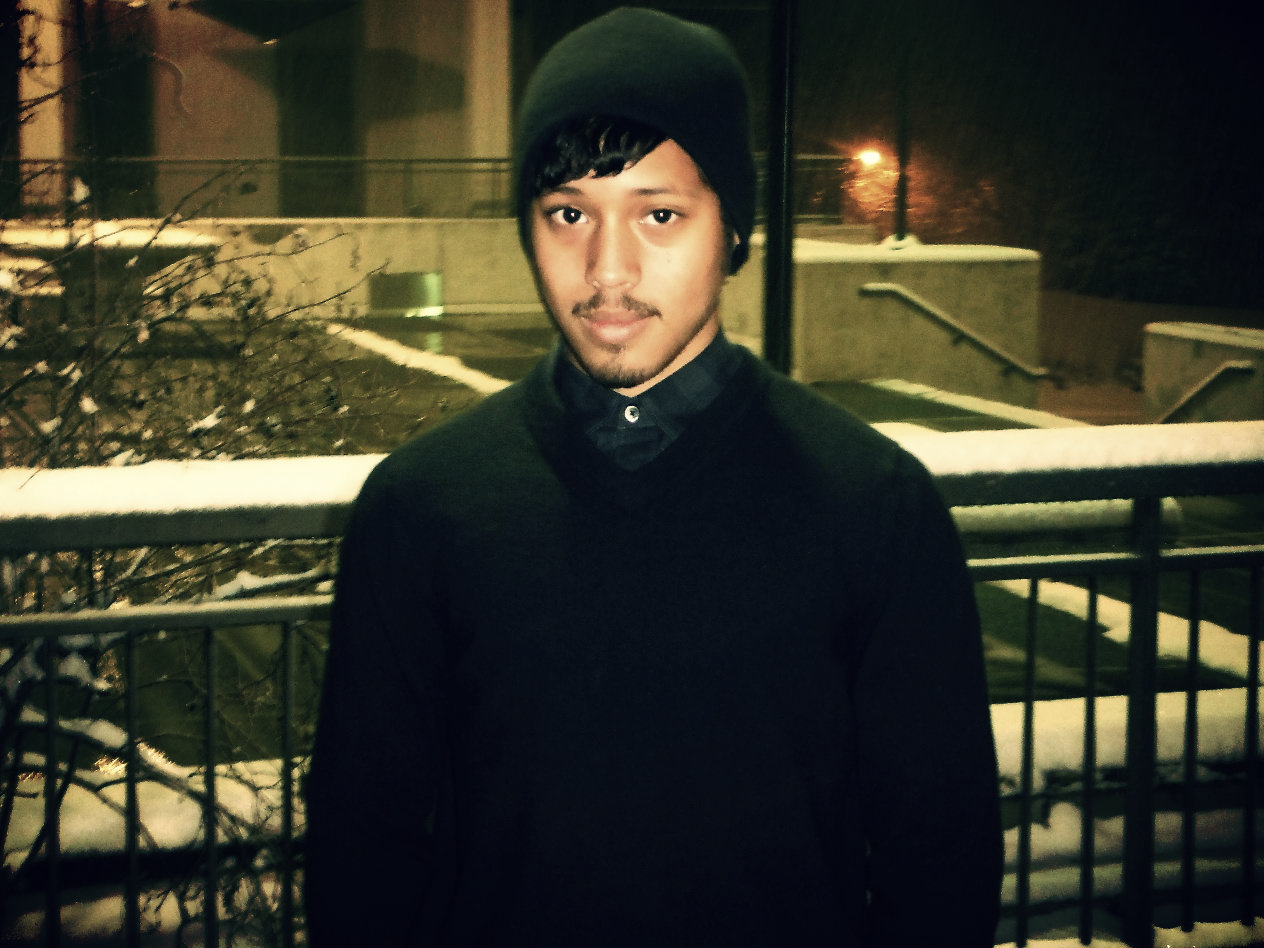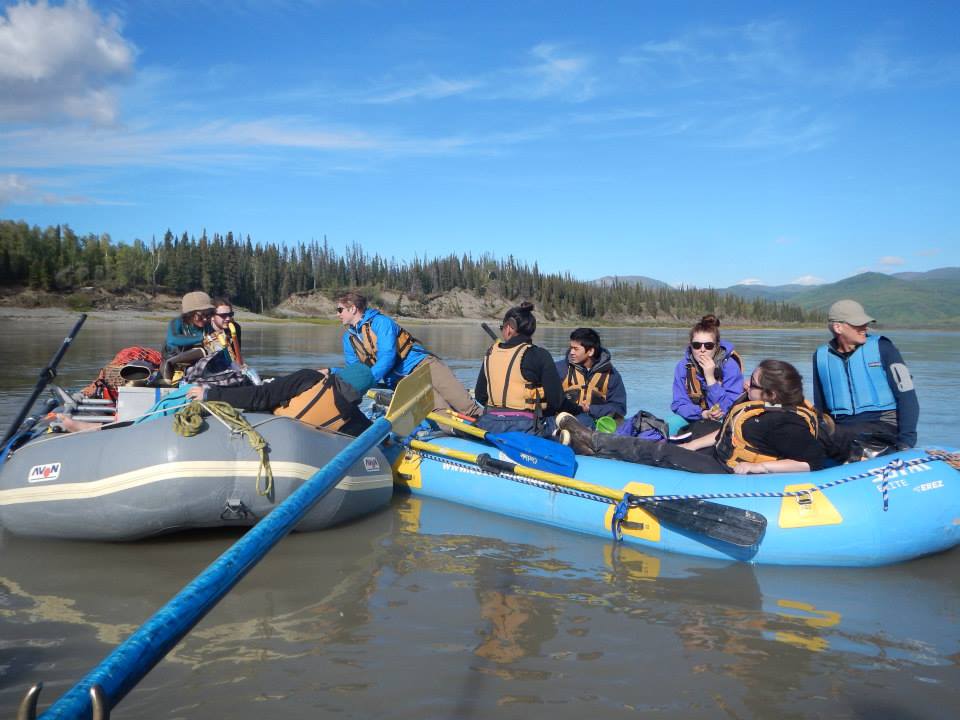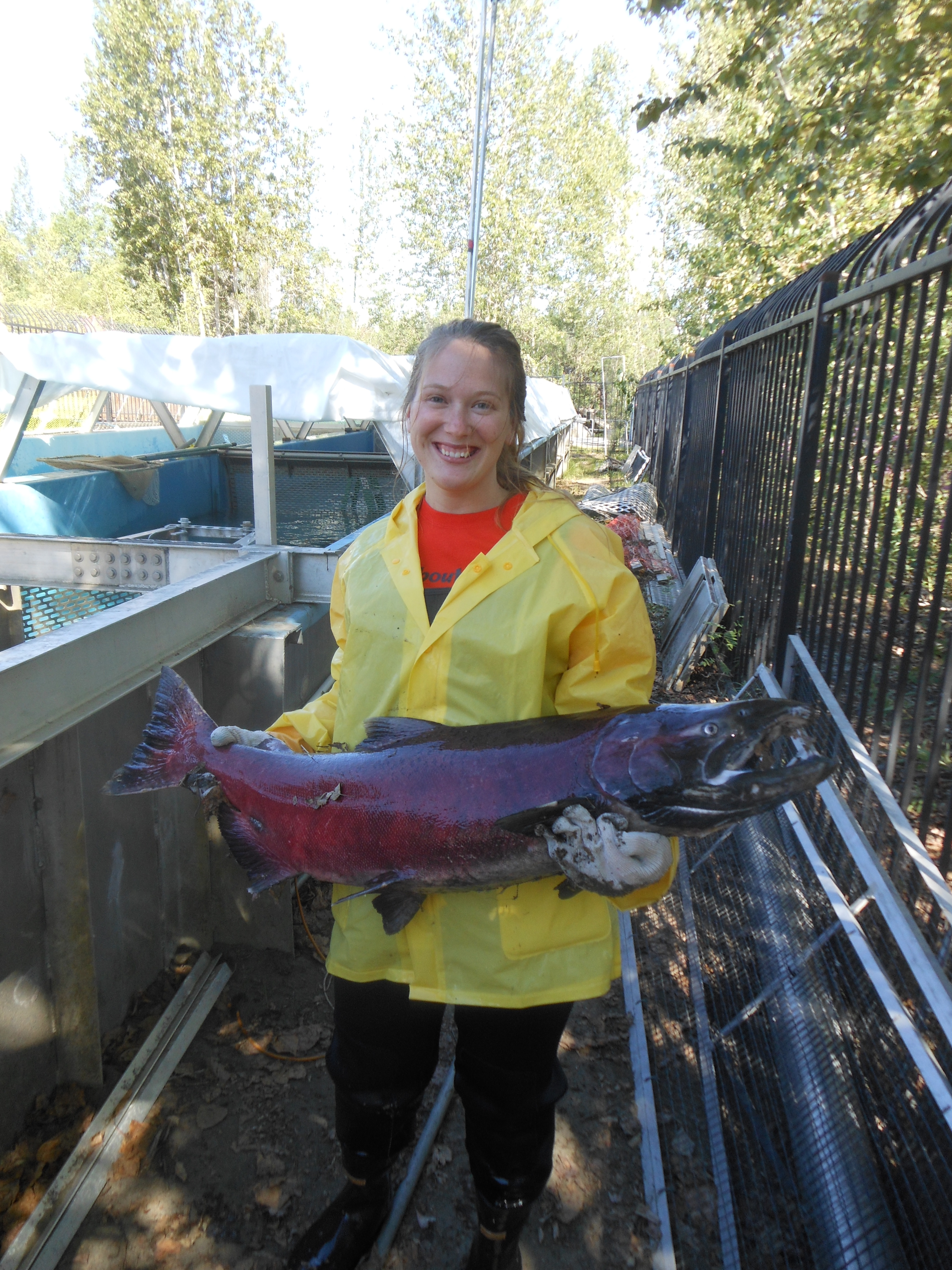By Simon Frez-Albrecht
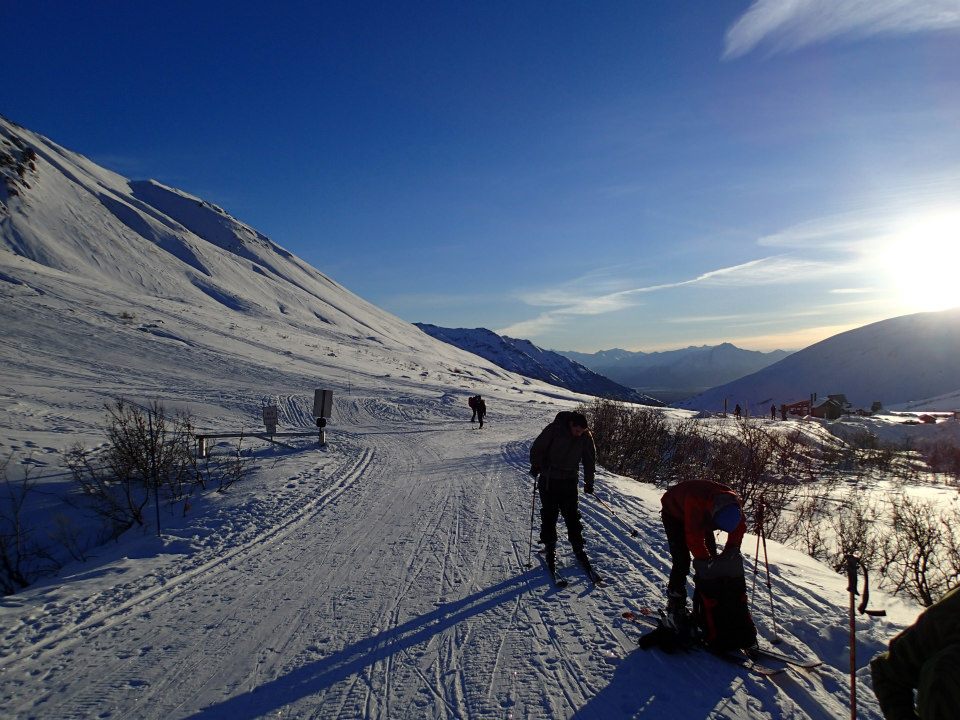
We began Winter Wilderness with a busy few days in which we frontloaded as much information as possible. Ideally we would have taken the whole class before taking the class, as there was much avalanche and safety information to learn quickly, as well as efficient and comfortable winter travel and camping skills. The first few days were long and packed with as much as we could handle, but we soon found ourselves at Hatcher’s Pass, unloading skis.
As we unloaded skis and packs in the Hatcher’s Pass parking lot on our first day, some students had been on skis exactly once or twice before in their lives. Looking at the group touring (flat or uphill travel on skis, using a one-way friction strip called skins attached to the bottom), one might never guess. Everyone settled into a groove for the short ski, and most were quickly stripping layers in the relatively warm temperatures.
On that first day we focused on strategic shoveling skills and avalanche beacon searches. Avalanche beacons are a critical piece of equipment for groups and individuals traveling anywhere there’s avalanche danger, acting as personal locators in the event of a burial. Equally important to having beacons is knowing how to use them efficiently. Starting with a coarse search to pick up a signal from a buried beacon and progressing to a fine grid search to pinpoint the exact location of the victim is an important progression to master for effective rescues. Later in the course we would take a timed test to verify our abilities as part of the Avalanche 1 curriculum.
Strategic shoveling is also important, as avalanche debris is quite different from the soft powder everyone loves to ski. Have you ever kicked or tried to shovel those piles of snow plow debris at the ends of parking lots? It is common for avalanche debris (particularly of those avalanches large enough to bury people) to be just about as hard as those dense, compacted and settled snow piles. While learning strategic shoveling, we focused on where to dig (don’t stand on top of the buried victim!), as well as how to shape the excavation to allow easy extraction of the victim. Part of this was also shoveling technique itself. Given the hard nature of avalanche debris, it is easy to break a shovel if you try to pry too much without weakening the snow with strategically placed stabs.
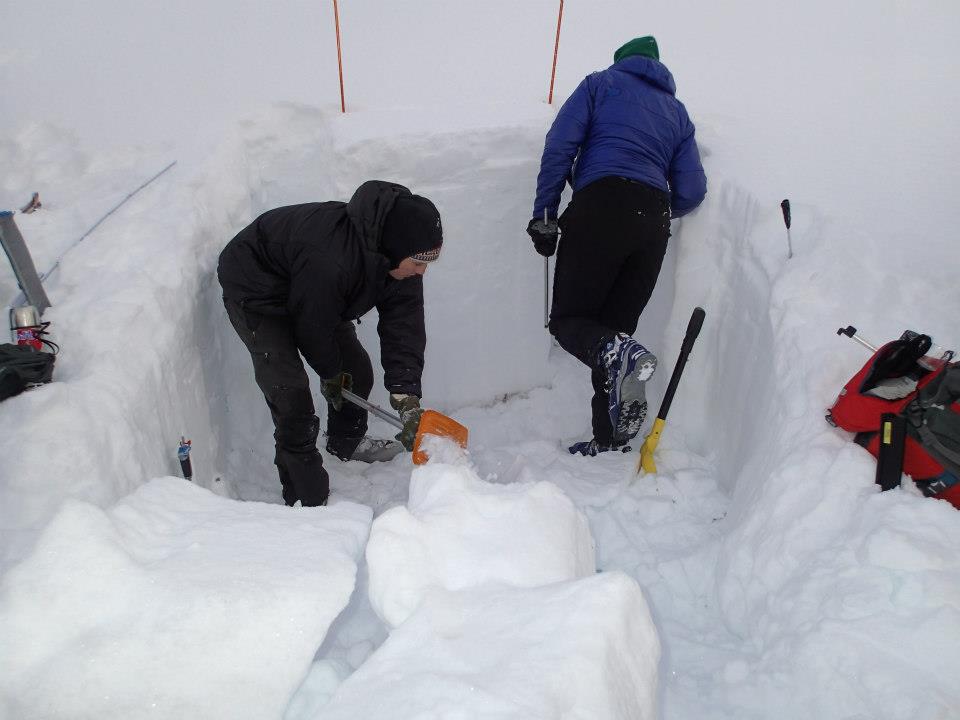
We spent that night at the farm, rehearsing the use of our MSR Whisperlights to cook dinner outdoors. After dinner we collected in the house to watch a case study video and discuss our plans for the next day; snow pits! A large part of avalanche awareness is the ability to comprehend what is happening within the snowpack. Consequently, we need to get into the snowpack to study the layers and see what’s going on.
Our second day at Hatcher’s began with a beautiful sunrise and a couple of inches of fresh snow on the ground, with an almost imperceptible ice crust from rain that fell with the warming morning temperatures. We again toured up the trail a fairly short distance and chose a site to assess. This pit was primarily dug by the instructors, with them performing standardized tests to evaluate the different layers within the snowpack, the potential for failure of certain weak layers, and the potential for propagation of failure across a layer. Basically, where the snow could fail and how likely that failure is to spread into a fracture line that could cause an avalanche.
After we finished assessing our pit, we filled it back in (can’t leave any traps for skiers!) and began a short tour before it got too dark. We split into groups and broke trail to the top of a small rise, discussing safe travel practice, route selection, and on-the-fly snowpack evaluations that can be done without stopping moving. After regrouping at the top, we “ripped skins” (removed our friction strips that allowed for uphill travel) and pointed our skis downhill. For many of us, it was the first time we had skied anything resembling powder. The result was a bit ungraceful. We had at least one head-over-heels fall, as well as a number of less dramatic tip-overs. It turns out powder skiing is a bit different from hard groomed trails at the local ski resort in town. Despite this, everyone made it back to the vans with no injuries and we headed back to school for a short recovery.
Back in town we continued our non-stop conversation about avalanche types, causes, safety, and condition evaluation. Our class was divided into three cook groups of 3 students, and one cook group of 2 students. Each group was assigned a tent and cooking equipment for the four day trip to Center Ridge at Turnagain Pass. We discussed meal planning, allowing for 4000-5000 calories per day, per person. We then had a scant couple of days to shop for our meals, acquire any last-minute gear, and pack our bags for the four day trip.
Again, we loaded the van and truck with our skis and packs, this time also bringing sleds to haul the extra gear needed for an extended stay on Center Ridge. When we learned that we would only be traveling a little more than a mile into our base camp, some were relieved and some were disappointed. Apparently, no one looked closely enough at the elevation profile of our route on the map. There was enough elevation, steepness, and fresh snow to break trail through to satisfy and torture everyone. Again, everyone was in the parking lot clipping into their skis and shouldering packs, looking up into the light snow falling from the sky toward our goal, and around at the well known ski lines on the nearby peaks. Again, everyone fell into a smooth train of skiers, this time spaced by sleds clipped to the waist belts of our packs. We had heard horror stories about traveling with sleds, including the one about the mild mannered student turning around and beating her sled with a ski pole in exasperation. At first, it was no big deal. Then we hit the small rolling hillocks and found our heals occasionally locked or unclipped from bindings, or the small clips holding our skins to our skis popped off. Sometimes there would be a bit of extra drag, and we would turn around to see that our sleds had flipped over after running up the edge of the ski track. We grimaced and one student began talking to her sled like a poorly behaved dog, but it was bearable. Then we began to gain elevation and came upon a slope named Massacre Hill by past students in the course. It looked like a climb, but nothing worthy of the moniker Massacre. We began to crawl up the hill, with our instructor breaking trail like a machine, creating switchbacks and powering toward the top. It looked easy enough, until we began to follow. All of a sudden, our annoying sleds became like the albatross around the neck of the ancient mariner. We would slide a ski forward, shift our weight onto our front foot, and attempt to step up. The weight of the sleds tugged at our waists like a sibling trying to start a fight, giving us trouble at every step. As we turned and began up each switchback, the sled would attempt to follow in a straight line up the hill instead of doing what any intelligent human would and follow the track around the turn. This caused even more frustration, and by the end of the 800 foot climb most were sweating and ready to burn their sleds. The worst was yet to come.
We arrived at what would become our home for the next three nights, and divided to establish our tent sites and unload the majority of our gear. With the tents set up, the group turned our attention to the kitchen. Since we would be in camp for a few days, it made the most sense to build a large communal kitchen that would be comfortable to cook in, offer some refuge from any wind, and allow us to watch over each other’s shoulders in case of any hiccups. Due to the deep snowpack, we dug our kitchen down, cutting a counter and a generous walkway to accommodate the four student cook groups and the instructors. It is one thing to be told that there is a 7+ foot deep snowpack, but it didn’t really sink in until we uncovered the top of a small tree as we finished digging the floor of our kitchen. With meals done and the darkness settled in, everyone retreated to their tents early for a good night’s sleep.
Our two full days at Center Ridge included meeting with a representative from the local avalanche center to learn about the weather station near our campsite, as well as learn about what goes into an official avalanche forecast. Apart from this, we spent most of one day digging snow caves in the deep snowpack, allowing for spacious and efficient snow caves. Most of the students slept at least one night in a snow cave, and nearly everyone that did had a great night of sleep. We discussed some other types of snow shelters, but with the 7 foot deep snow, there was no need for anything but a cozy burrow in the snow.
The second full day saw us doing some touring back into the mountains a little farther to see some breathtaking vistas as the clouds lifted. We also stopped and practiced digging and testing snow pits, discussing the important components such as standardization for repeatability and appropriate site selection so that our pits would tell us meaningful information about the slopes we intended to ski.
On our last morning we cooked breakfast, broke down camp, and filled in the kitchen. Everyone rigged their packs and sleds with some trepidation, looking down the hill we had come up before. One instructor took off fearlessly down the gentle incline away from our campsite and everyone else fell in behind, skiing cautiously. We had several falls in the first few minutes. We recollected at the top of Massacre Hill and looked down, realization sinking in. We spaced ourselves out, going one at a time to prevent too much carnage in the event of a fall. Many were able to stay upright for the majority of the trip, but most fell at least once. One girl had her face run over by her sled. Many people were punched hard in the arm or leg by their sled. Everyone also discovered how difficult it is to get up wearing a heavy pack on a slope. Some people suffered from turtle syndrome, unable to roll onto their fronts. The students traveling in the front of the group related looking back and seeing carnage – overturned bodies and sleds all over the hills. The title Massacre Hill seemed more fitting by the end of this trip. In the end, everyone made it back to the vans safely, though one student appeared from the trail carrying both his skis due to blown bindings and boots.[author image=”http://turnagain.alaskapacific.edu/wp-content/uploads/2013/03/Simon-face-e1364000388418.jpg” ]Simon Frez-Albrecht came to Alaska in 2012 to begin working toward his degree at APU and play in the mountains. When he is not doing schoolwork, he may be found pursuing a wide variety of mountain sports with friends, working with his hands, or managing a canoe rental shop in Connecticut[/author]
